Jaeger-LeCoultre Watches: Why Are They Not More Popular?
by Raman Kalra
Raman Kalra is the founder of The Watch Muse blog and has kindly agreed to share some of his articles with us here on Quill & Pad.
___________________________
There is only one way to introduce Jaeger-LeCoultre or JLC: it is the Watchmaker’s Watchmaker. It is a widely known term that even JLC themselves push and it defines the brand well.
Since its inception, JLC has over 430 patents registered and 1,300 calibers, having mastered high-horology complications such as minute-repeaters, the tourbillon, and celestial complications.
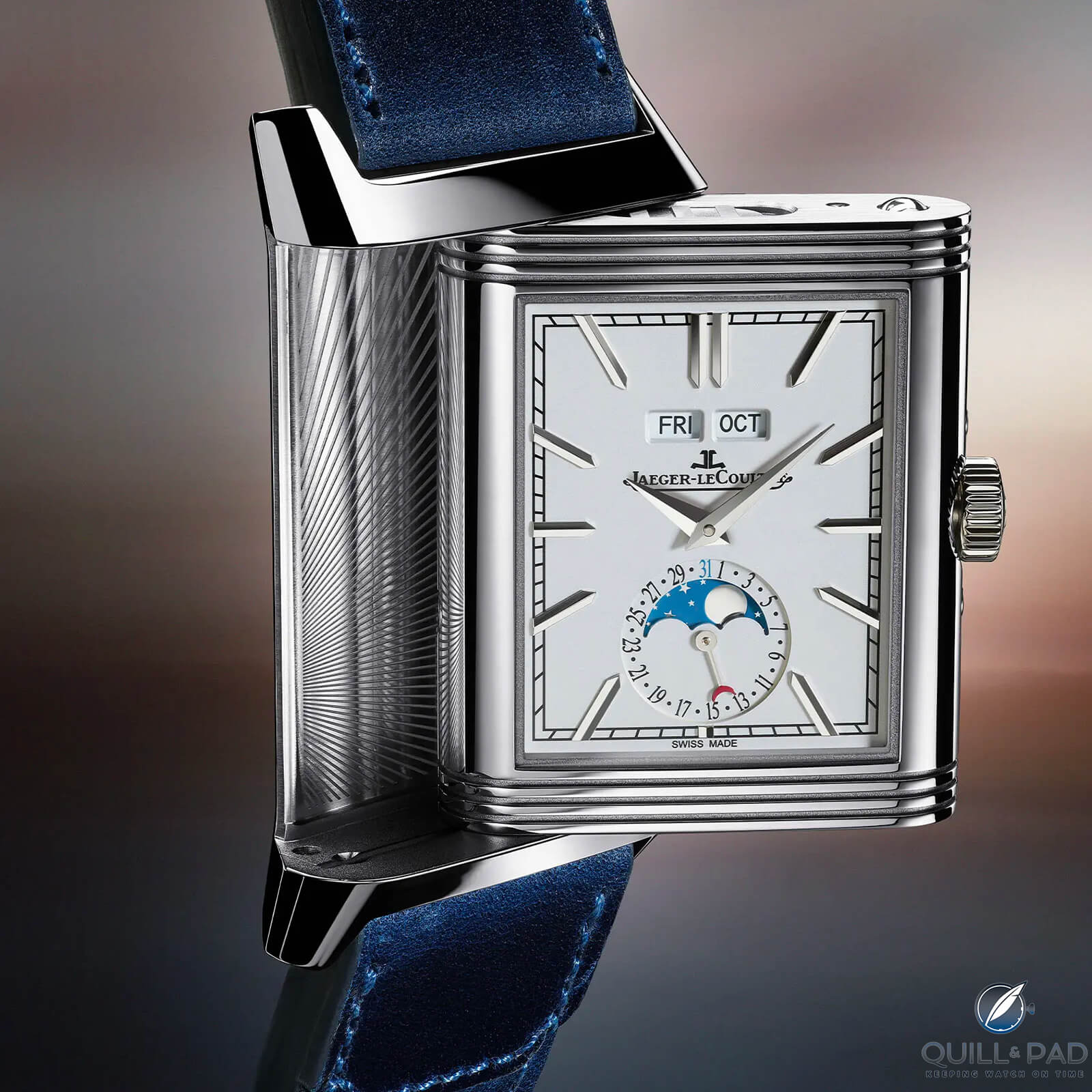
Jaeger-LeCoultre Reverso Tribute Duoface Calendar
At the same time, within their catalog, they have one of the most iconic watches – the Reverso. This does not mean they have not had other successes and some models like the Duomètre, I find, are works of art.
I am a big supporter of JLC.
There have been times when I have considered adding one to the collection. Not the Reverso, but the Geophysic back in 2015 and the Master Control sector dial from 2017. On paper, the brand is one of the best, yet it does not have the same broad popularity as others.
Names that would be considered their natural competition like Patek Philippe, Vacheron Constantin, and Audemars Piguet, also known as the Holy Trinity of watches, have surged in recent years. They are now all arguably well-recognized brands in broader society, whereas the love for JLC is reserved for true enthusiasts.
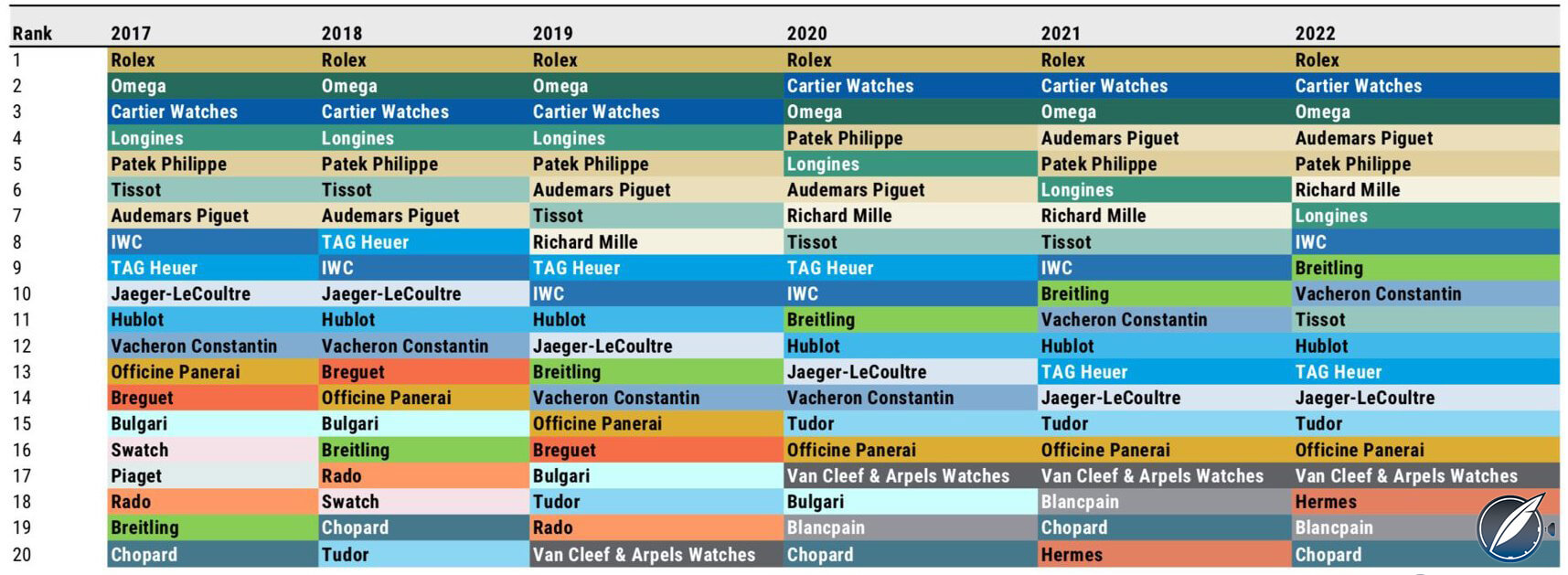
Morgan Stanley Watch Report 2017-2023
It is evident when considering market prices for these brands, as it shows JLC not experiencing the same price wave as others. Also, the Morgan Stanley Watch Report indicates JLC has dropped from 10th to 14th in Swiss watch brand rankings from 2017 to 2023 as defined by exports market share.
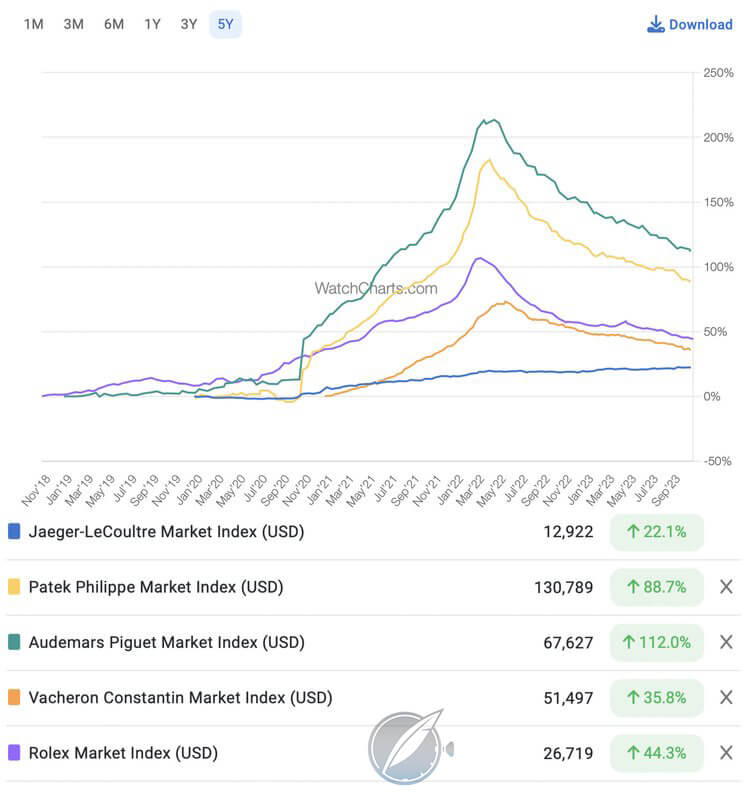
On the one hand, I find this not to be a problem. I like the fact that JLC is subtle and does not receive the same attention as others for no other reason than it keeps them available and prices in check. However, on the other hand, it does make you wonder why this is the case.
What is JLC doing, or not doing, that is preventing it from being in that conversation?
There are no hard answers to this question, but it is a topic that interests me, especially given my appreciation for JLC. My opinions are below, and I have separated them into different categories. Despite doing this, you will find they are all interlinked and there may be some overlap. Please share your thoughts and opinions in the comments!
————————————————————————————
————————————————————————————
The Digital Age
The first, and most obvious reason JLC has not gained as much attention as other watch brands is due to the rise of the digital age. I have spoken about this extensively in previous articles, but the exponential rise in watch interest comes from a combination of social media and access to information.
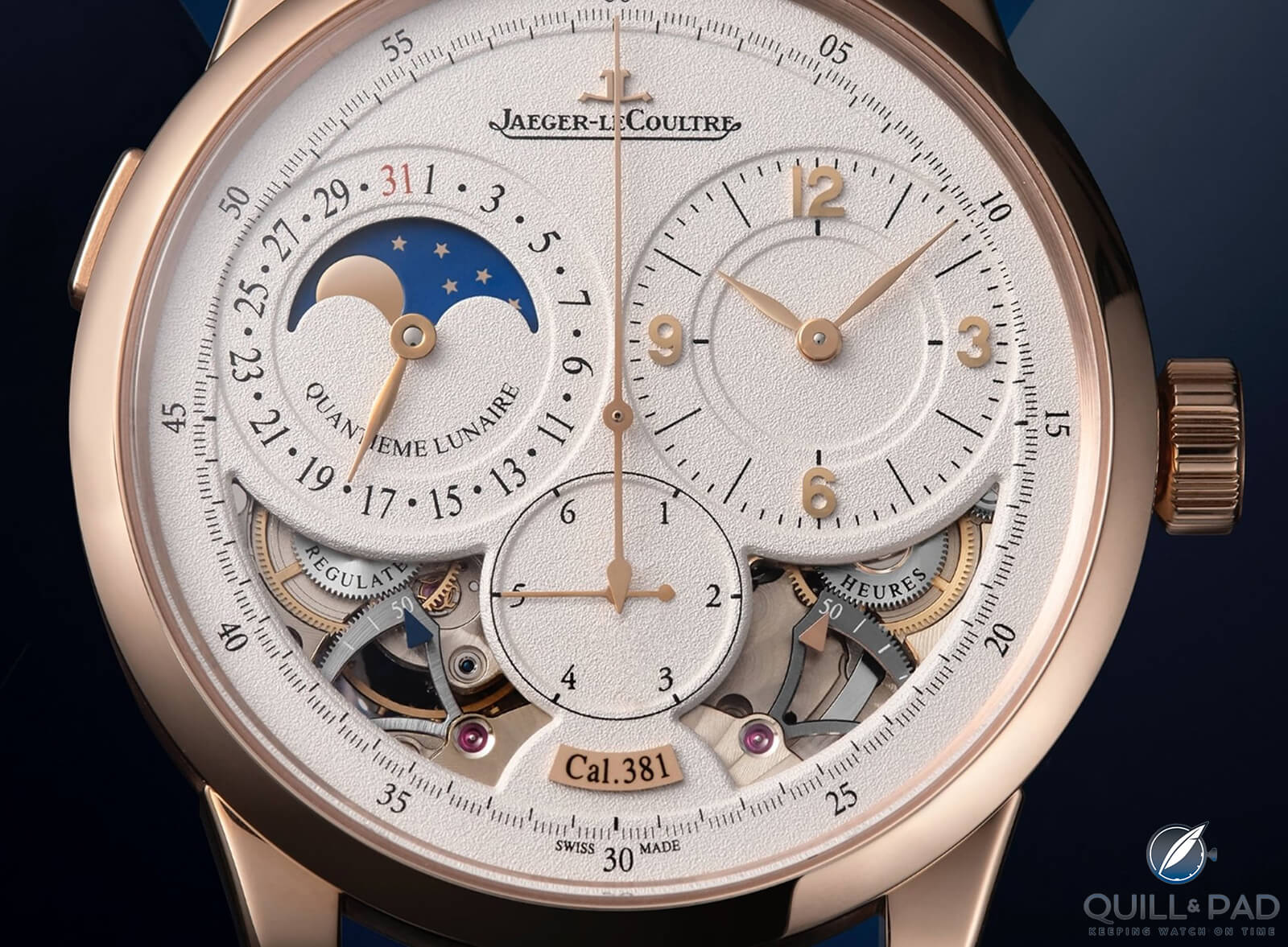
Jaeger-LeCoultre Duomètre
Many now have access to more information than ever before through channels like YouTube. Watch launches are no longer just for the mainstream press, they are for the masses. Information is no longer reserved for niche watch blogs and magazines but is easily covered and found online. This has helped the tide rise for all brands and the industry as a whole.
However, combining this with social media is where it gets more targeted on specific brands and references. Platforms like Instagram have led to watch “influencers” and coverage of certain watches more than others.
At the same time, watches are now more widely accepted as a social status symbol, leading to an increase in demand. Finally, combined with the cryptocurrency boom and low-interest rate environment of prior years, there was more attention on watches as an asset class, bringing in further demand.
This combination of events resulted in a surge in demand for certain brands and watches, particularly in the sports watch category. This can be attributed to the versatility of sports watches that can be worn in various settings.
Work environments, even prior to Covid-19, were becoming more casual so there was no specific need for a dress watch.
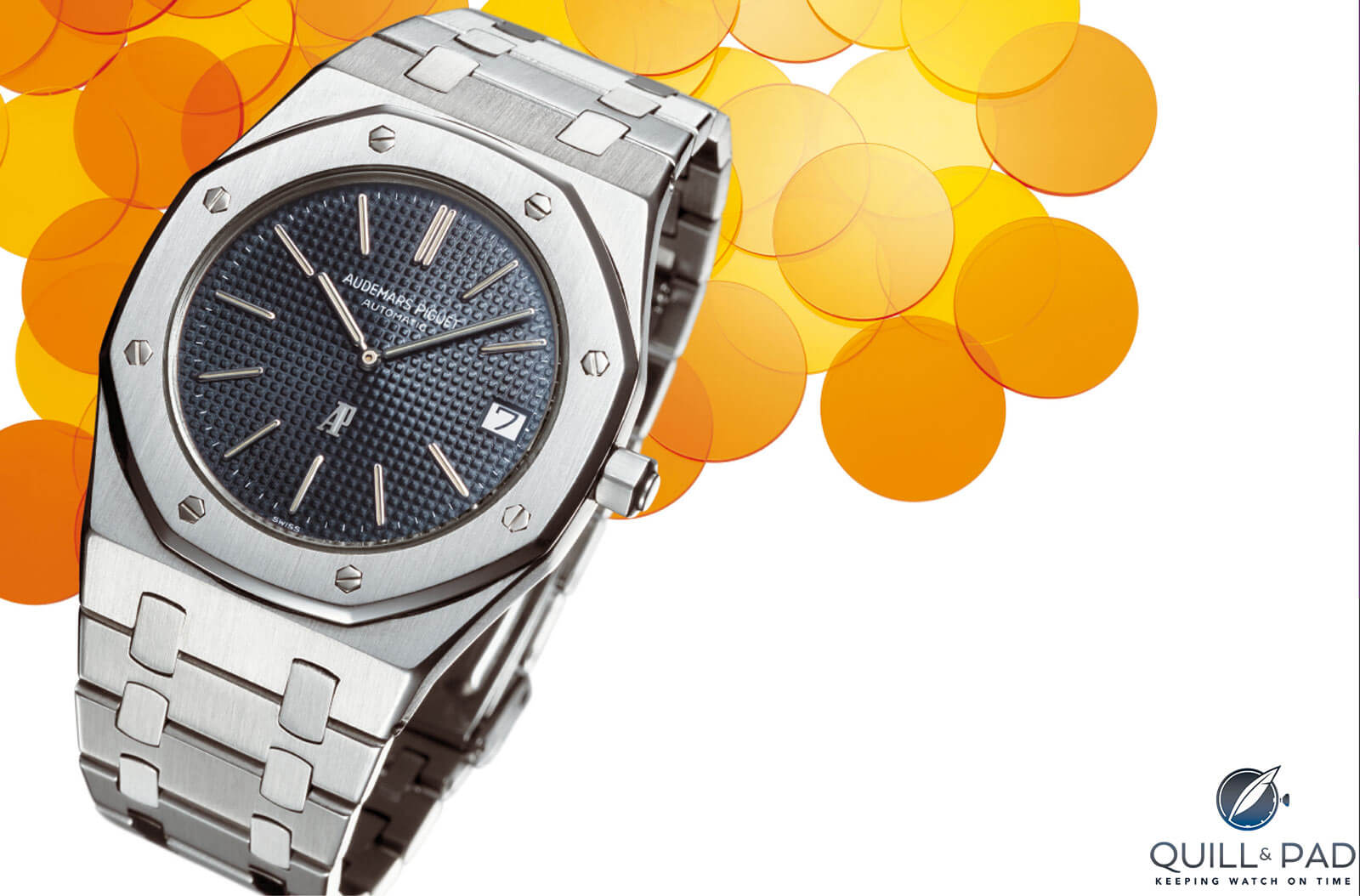
Original Audemars Piguet Royal Oak from 1972
However, even within the sports watch category, the demand was not evenly distributed, with models featuring integrated bracelets like the Royal Oak and the Nautilus being the most popular. This trend favored brands such as Audemars Piguet, Patek Philippe, and Vacheron Constantin, which offer similar designs like the Overseas.
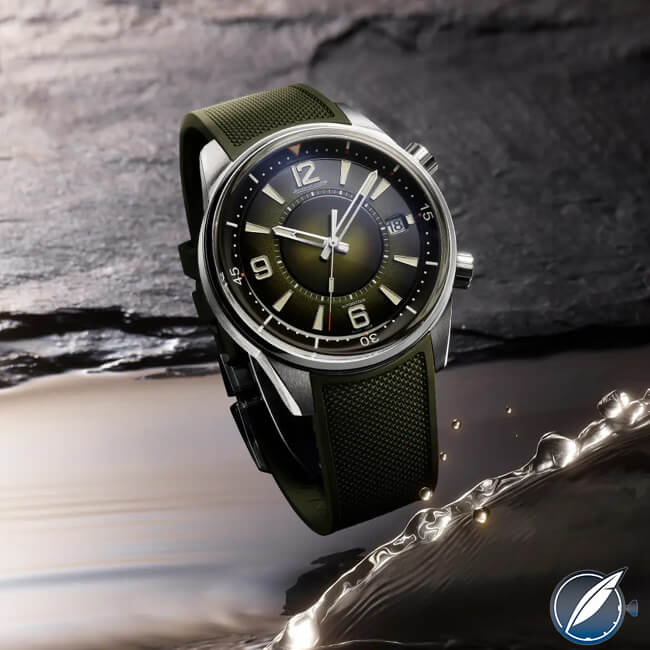
Jaeger-LeCoultre Polaris Date
JLC goes against the wave we have experienced as they focus on more delicate, intricate dress watches. They did not have a sports model to benefit from, and even though they created the Polaris, it did not necessarily follow the typical style that everyone was after. Despite being a great watch, it is a newer model and did not have that instant appeal.
What I do admire about JLC is they have stuck to their philosophy, but from this perspective, it is evident as to why they do not have the same popularity as others.
————————————————————————————
————————————————————————————
A Different History
JLC has a long history, dating back to 1833 when Antoine LeCoultre began creating timepieces. He focused on producing high-quality timepieces by using his passion for measuring time. Combining his imagination and intellect, LeCoultre produced the most accurate timepiece of the time in 1844, the Millionomètre, and a keyless system to wind and set watches in 1847.

Jaeger-LeCoultre manufacture in Le Sentier, Switzerland
Shortly after, the brand became the first manufacturer to bring every aspect of watchmaking into one place. Under the name LeCoultre & Cie, they had success in bringing many calibers to the market.
It was in 1903, when Edmond Jaeger challenged Swiss watchmakers to produce an ultra-thin movement that the collaboration between the Jaeger and LeCoultre name began. This partnership resulted in a range of ultra-thin pocket watches, including the world’s thinnest in 1907.
The LeCoultre name has always focused on movements, supplying brands such as Cartier, through the Jaeger collaboration. The partnership was so successful that the brand was renamed Jaeger-LeCoultre in 1937.
The reason why JLC’s history is worth highlighting is twofold: the focus on movements and the brand name as we know it coming a lot later. All brands had a focus on movements at the start. During the early days of the industry, innovation in movement engineering had a significant impact on the industry and society as a whole.
The difference is the ethos of JLC remained focused on the innovation and intellectual angle of watchmaking.
JLC produced movements for other manufacturers, and in the early 1900s, JLC’s notable releases focused on movement achievements such as ultra-thin pocket watches or Duoplan in 1925, which was a response to the miniaturization trend.
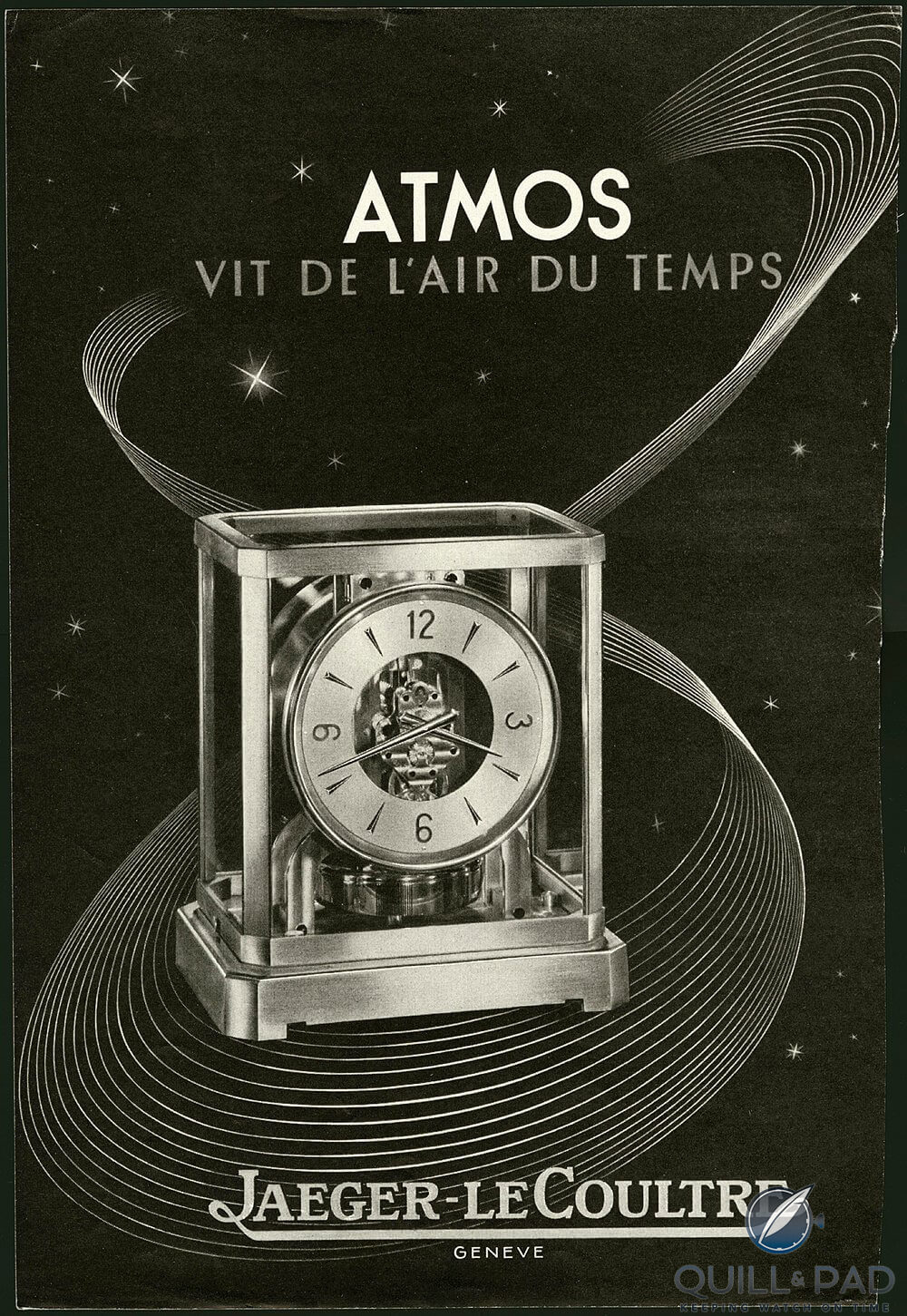
Jaeger-LeCoultre Atmos advert from 1942
This was followed by the renowned Atmos clock, known for requiring minimal human interaction by deriving its energy from the surrounding environment while being very accurate.
————————————————————————————
————————————————————————————
During the same period, you had other brands focusing on how to make watches more practical. For example, Cartier produced the first wristwatch for men with the Santos, while Rolex created the Oyster case and Perpetual movement.
IWC and Breitling were focusing on producing useful tool watches and cockpit instruments for the military. This period was all about brands creating the identity they have today.
The real separation came in the 1950s when watches, as we know them today, were conceived. Again, this was a period where a watch was extremely useful as a tool in many professions, and it is how many brands landed on their iconic designs of the present: Rolex, Omega, Blancpain, Zenith, the list goes on. They all created something that innovated in their respective fields, while providing use cases for broader society, leading to them all gaining traction.
This was helped by several of them appearing in pop culture. In a sense, these models were brand-defining moments. Now, when thinking of JLC, their main defining launch was the Memovox, but this was a more niche offering. They created the Polaris in the 1960s, although the design came and went through the years.
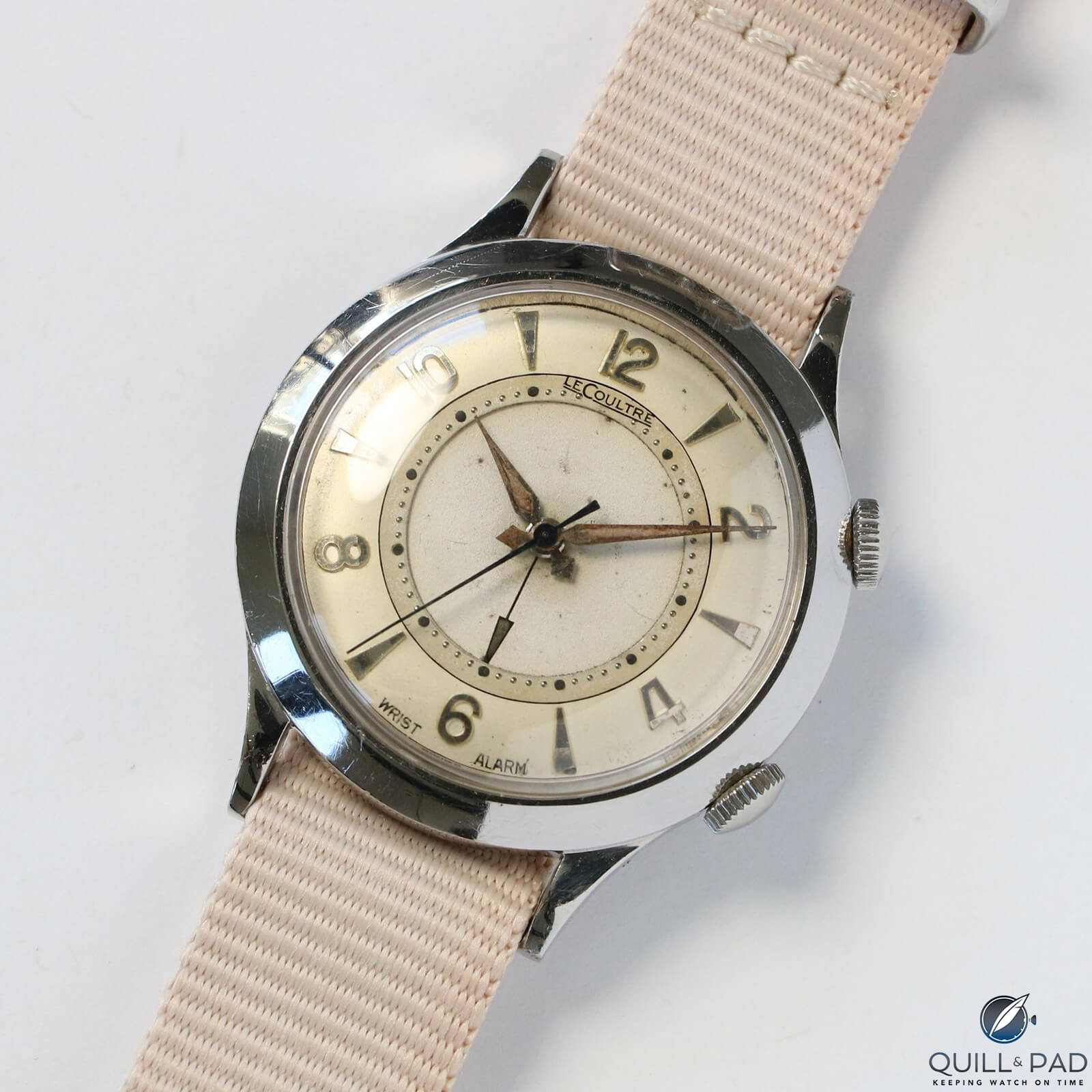
Jaeger-LeCoultre Polaris (photo courtesy Stetz & Co)
JLC did end up developing certain design elements that have been carried forward, but no one specific model has been retained to the present day in a similar fashion to the Nautilus, Royal Oak, Fifty Fathoms, and many more.
————————————————————————————
————————————————————————————
Design Identity
JLC produces some exceptional watches. Their collection spans from the high-horology complications that blend simplicity and complexity, to their newer, more robust Polaris references. Nevertheless, it’s widely acknowledged that the Reverso is the timepiece that truly defines the brand.
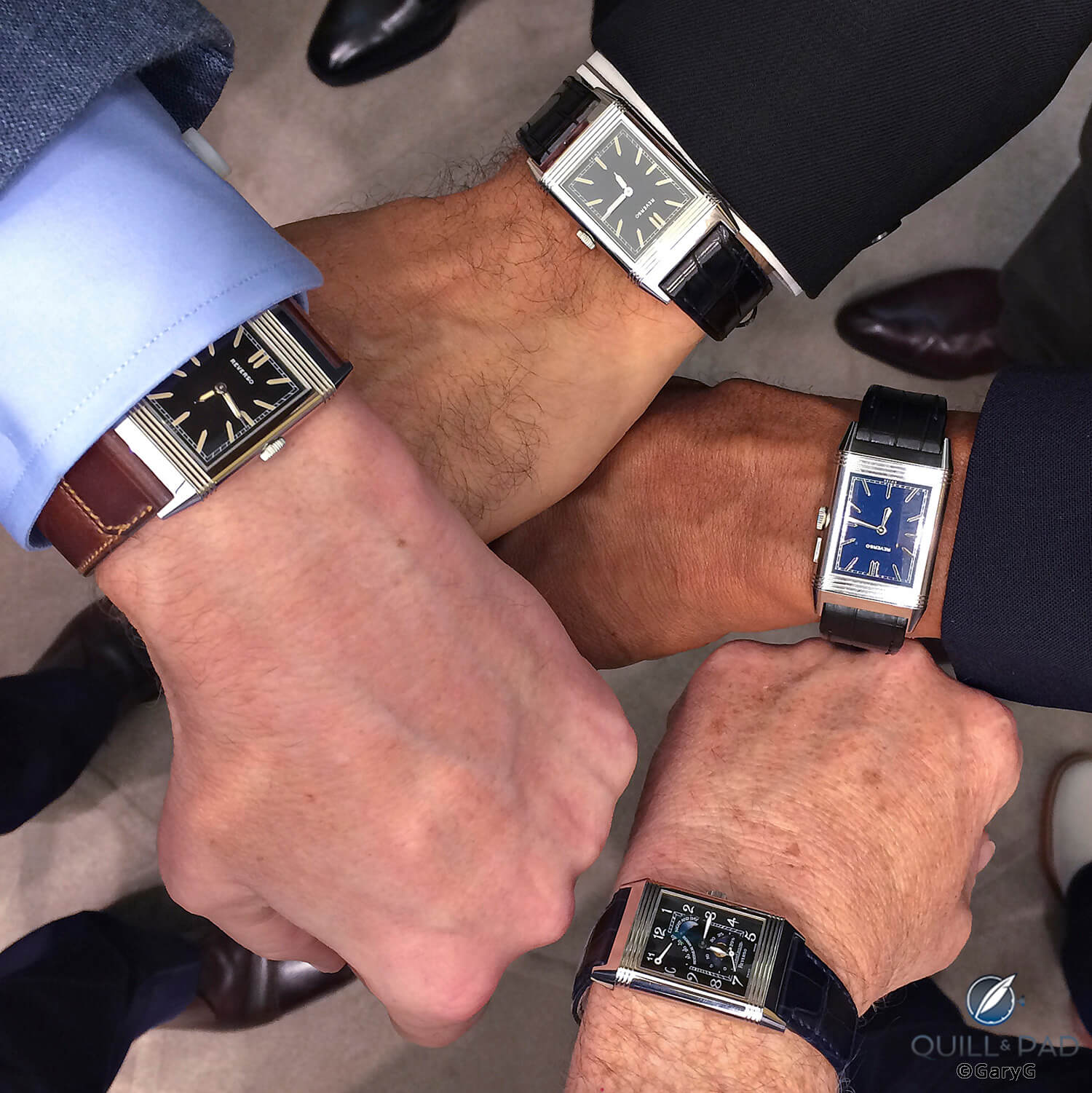
Always welcome: group wristshot of Reverso enthusiasts
Originally created as a solution for Polo players who wanted to protect their watches while playing, the Reverso remains an engineering marvel and one of the most iconic watches even after 92 years.
This is especially impressive considering that the watch was out of production from 1948 for just over two decades when other brands were finding their design language.
As discussed in the previous section, JLC has always been renowned for its focus on movement innovation. JLC movements have been used by a good proportion of the industry, which has been a major factor in the brand’s appeal.
At the same time, the consistency with design language was not found.
Where other brands like Audemars Piguet, Patek Philippe, and Vacheron Constantin found some longevity in their evolution of design, JLC has been varied.
This idea ignores other brands from different tiers finding an aesthetic and continuing with it – think of Rolex and Omega for example. When it comes to high horology, this is to be expected to some degree since designs are more varied and singular given the lower production nature.
However, with the more accessible models, this lack of consistency holds true for JLC, except for the Reverso.
This is similar to what we see with the IWC Ingenieur, which never had the same appeal as other Genta-designed watches. This is because it went through a number of design refreshes until IWC eventually followed the original in 2023.
————————————————————————————
————————————————————————————
While the Reverso is an incredible watch, it won’t be for everyone given its size and shape. The remaining result is that JLC does not have a flagship product that can appeal to all.
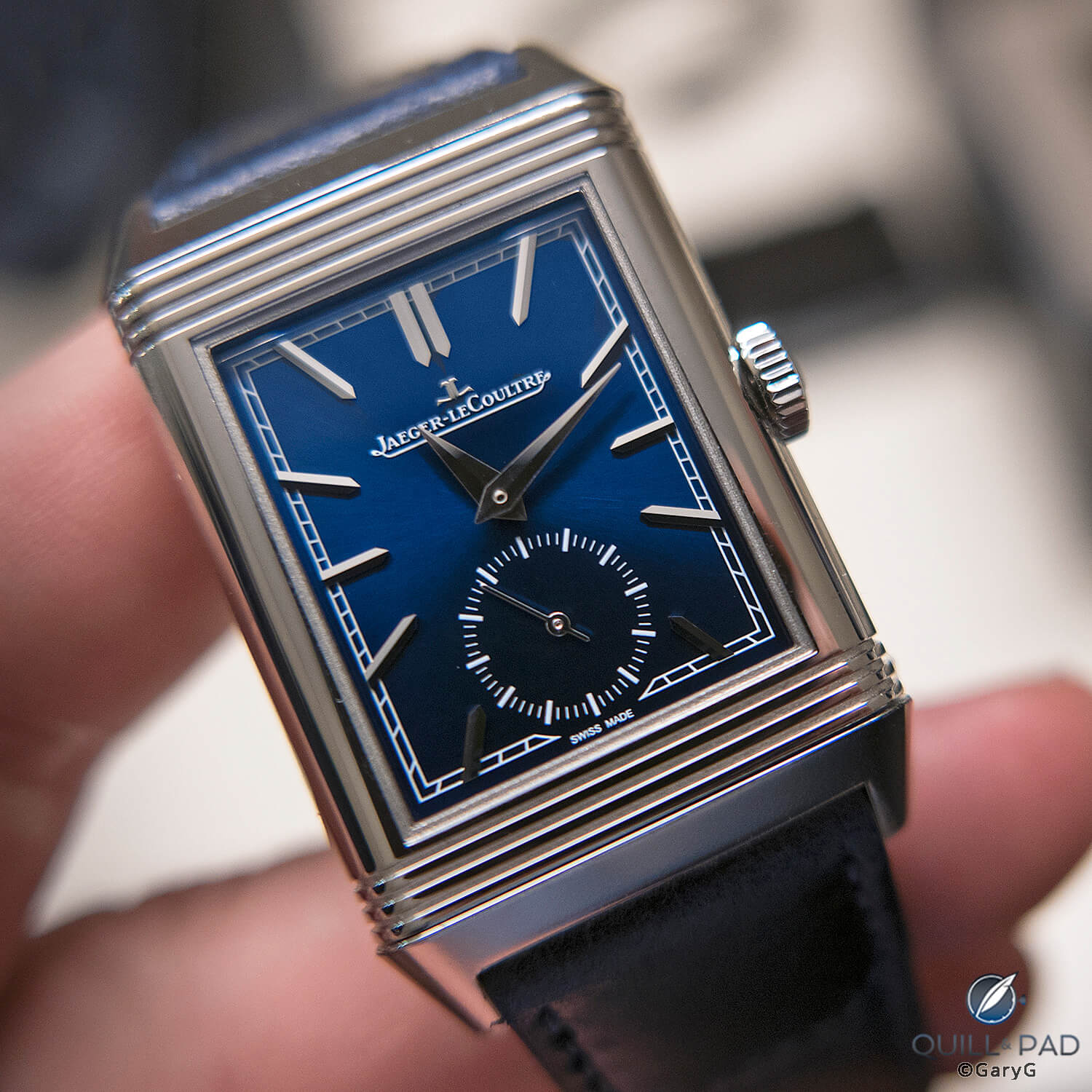
Simple three-hand Reverso with brushed vivid blue dial
Aspiring to own a JLC, or something similar, stems from emotion. Building that emotion comes through the story and heritage behind the product and understanding what it represents.
There are some clear examples of this including the Rolex Submariner or Royal Oak, and even in other product categories like cars with the consistent Porsche 911 or clear Ferrari aesthetic.
Without this, JLC becomes a brand you buy for yourself, in a similar vein to Grand Seiko, and therefore, it loses broader appeal.
Knowing that a watch is a JLC from a distance requires you to be an enthusiast. There is not that one clear collection except for the Reverso that is distinctly JLC.
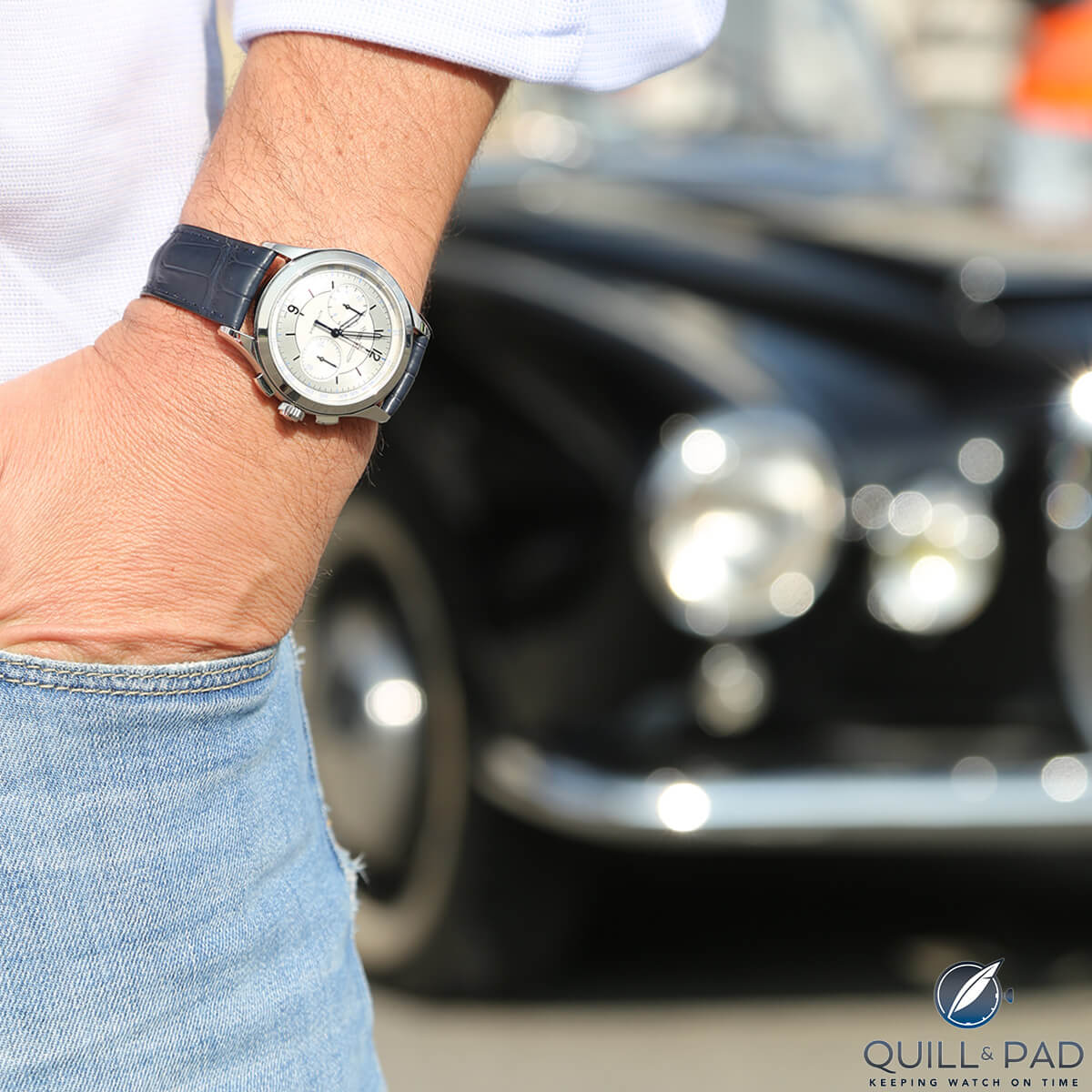
Jaeger-LeCoultre Master Control Chronograph on the wrist
I know what you might be thinking – what about the Master Control? I partially agree, but at the same time, many of the time-only pieces can look like a number of brands. What makes them special is everything else JLC does such as finishing or movement.
Entry-Point
I heard a really interesting statement recently: “Your brand is defined by your cheapest entry-level watches”. This concept resonated with me as I felt it to be true, even if I did not realize it. If you apply this logic to any number of brands it can become quite a stark indicator, especially for the larger ones.
With that in mind, applying it to JLC, I am not sure where I land. A few years ago, the iconic Reverso was an entry-level offering from JLC, competing with other luxury timepieces from Omega, Cartier, and Breitling at a similar price point. Given its icon status and the JLC brand, it made it a great value proposition.
————————————————————————————
————————————————————————————
Understandably, JLC knows the significance of the Reverso and in line with the exponential rise in watch demand, increased prices dramatically. This now leaves the entry point blurred between the smaller Reverso models, the Master control, and if you want to widen the band, the Polaris.
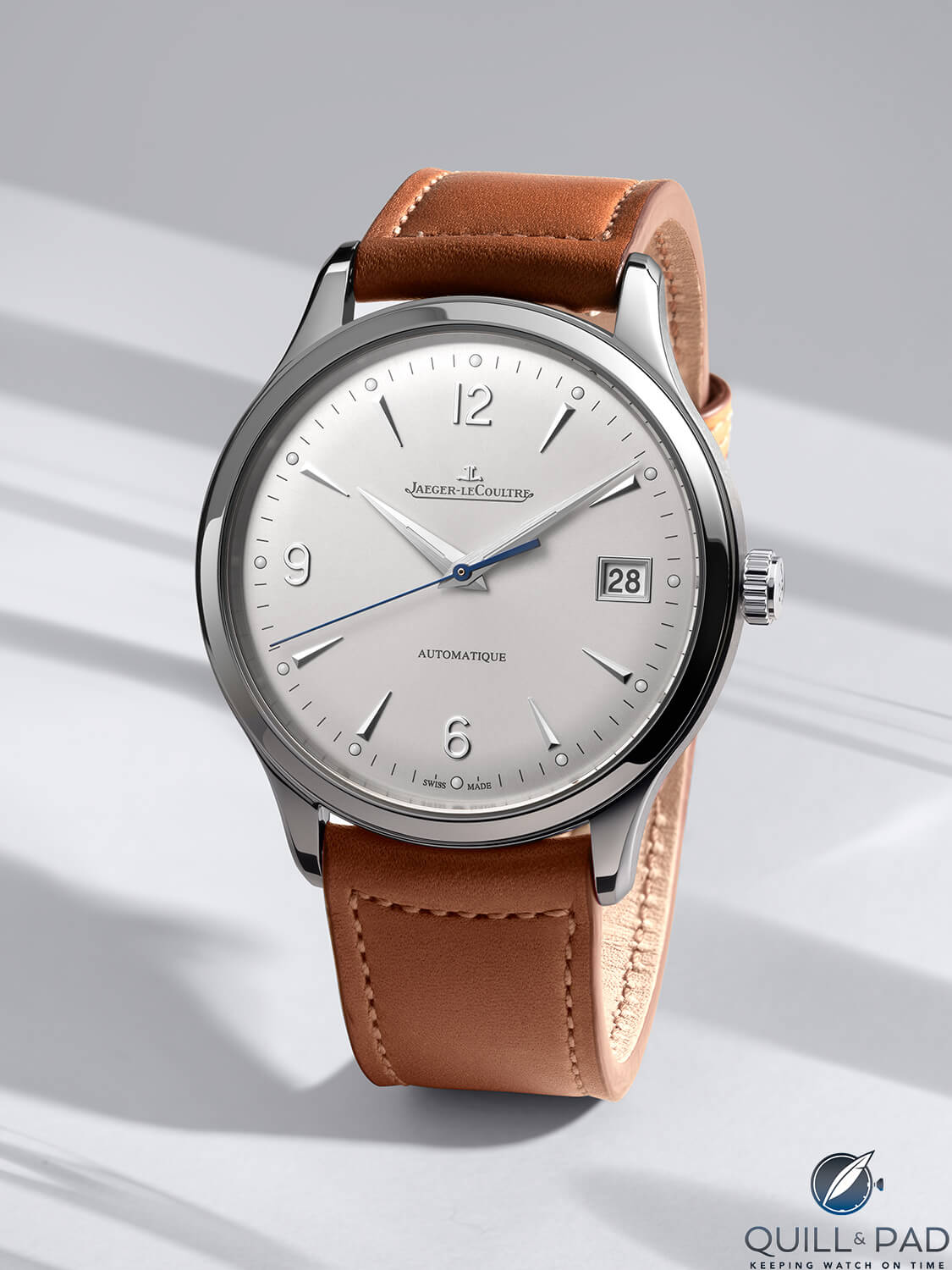
Jaeger-LeCoultre Master Control Date
All the watches mentioned are great in their own way, but what exactly does an entry point to a brand mean?
Firstly, and most obviously, it gives the opportunity to buy into and experience a brand that also offers higher-level products.
Secondly, being able to experience a brand and having a positive experience, it can create some brand loyalty and lead to those customers staying within that brand for their next purchase.
A recent Talking Watches with Jon Mayer and Ed Sheeran covered this exact topic. Jon Mayer explained that he struggles to get into a brand he has not owned before, and F. P. Journe is the first new brand for him in the last 10 years. This concept applies not only to watches but also to other areas where brand loyalty is established by keeping clients at the entry point and turning them into customers for higher-priced products.
JLC excels at high-horology watches, whether they be the Duomètre, minute repeaters, or perpetual calendars. However, the competition has similar high-horology offerings, especially the Holy Trinity, but they can attract a wider audience to the brand by offering compelling, in-demand watches at relatively affordable prices (affordable in the context of these brands!).
They may be different styles, but let us consider the entry-points to some brands that would be the equivalent of the Reverso, Polaris, and Master Control. Vacheron Constantin has the FiftySix.
Patek Philippe has the Calatrava, a name synonymous with dress watches in the industry, with dials that range from completely clean to more interesting designs like the pointer date.
Audemars Piguet has a higher entry point, but it is the Royal Oak. This leads to the most obvious point. All three of the Holy Trinity brands have their own integrated bracelet sports watches that have been the most in-demand design in recent years.
This has done a lot to bring in new customers and can show the power of having a compelling watch that appeals to the masses regardless of age or geography.
————————————————————————————
————————————————————————————
Competition
This whole idea of entry-point and design language leads to the question of the competitive landscape, which is arguably stronger than ever. Brands are pushing the boundaries of movement innovation, case materials and design. JLC is a part of this but they are in a more unique position.
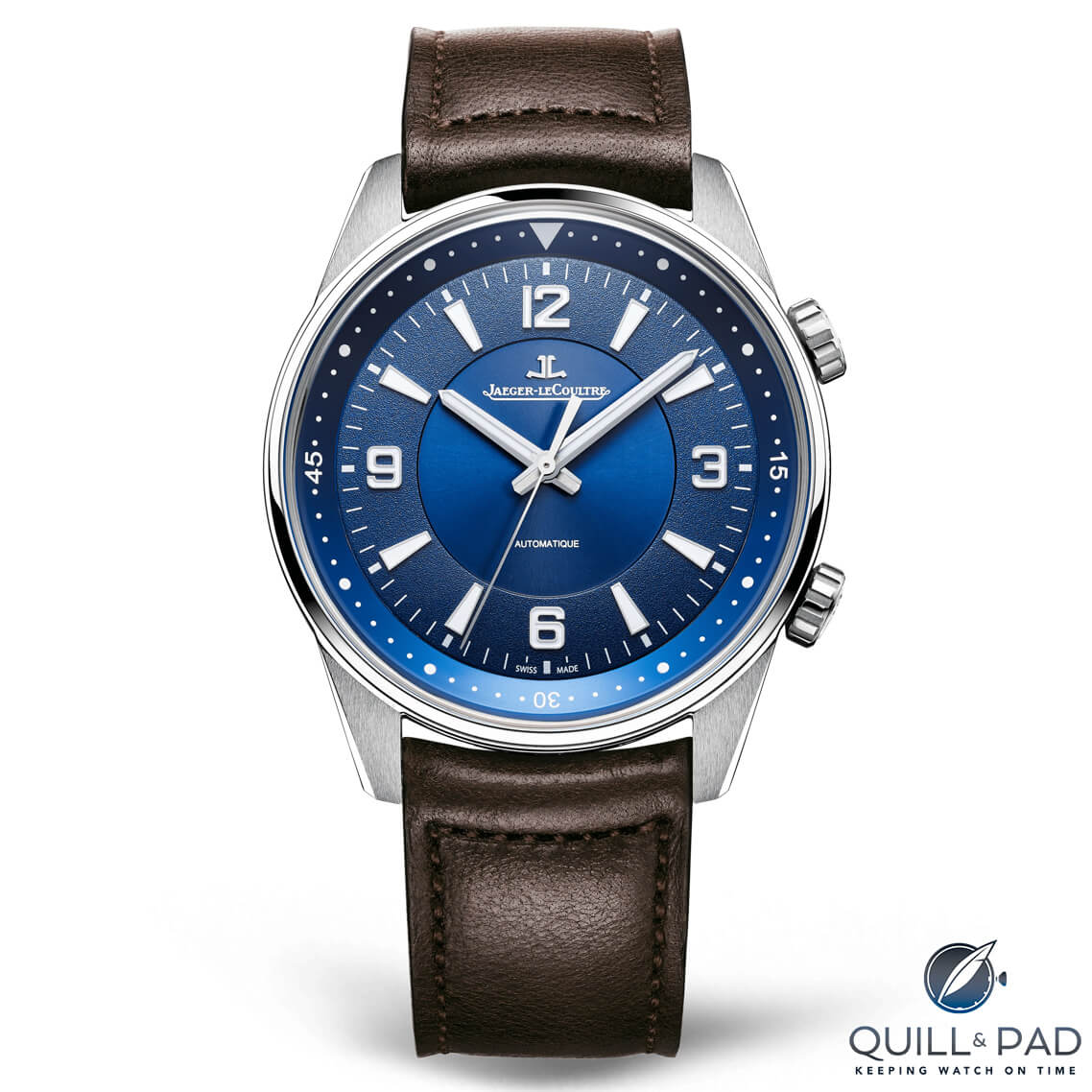
Jaeger-LeCoultre Polaris automatic
By having the history it does and the changing design language across the collection, it has resulted in a market where they are not the most obvious choice for any specific style.
Again, this has to exclude the very unique Reverso and more high-horology watches. If you think of the best dive watch, it would fall to Blancpain, Rolex and Omega.
The best dress watch, it is hard to argue against the Patek Philippe Calatrava or some of the newer names like A. Lange & Söhne. This can go on to categories like GMT, sports watch or whatever it might be.
Now, “best” is very subjective, so think of it as meaning most coveted. This is not a knock on JLC at all, as they produce excellent products, but rather the design, heritage and emotion seem to lie more clearly with others. It makes JLC a purchase that you need to go out and decide for yourself and, again, stops more widespread demand and appeal.
Marketing
Luxury items are often purchased not out of necessity but because of the emotions they evoke in the buyer. How is this emotion achieved? Through the story behind the product.
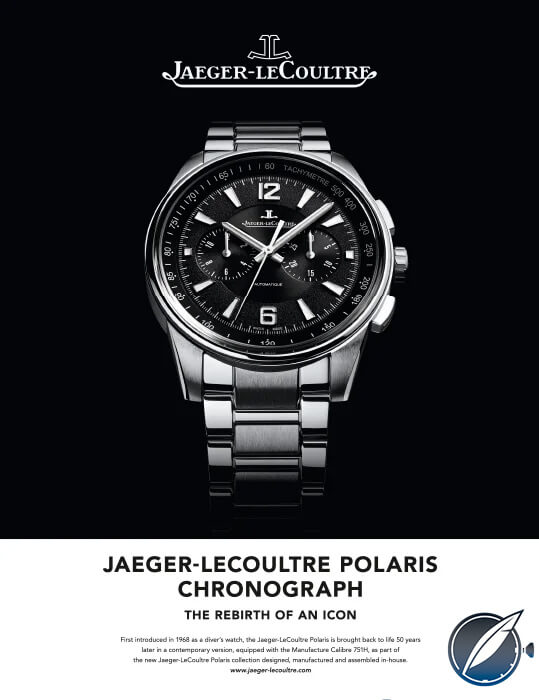
Jaeger-LeCoultre Polaris Advert
You might buy a Royal Oak because it looks attractive, but it’s the story of how it defied the Quartz Crisis and created the concept of luxury steel watches that really captivates the buyer.
You purchase a Vacheron Constantin Historiques 1921 for its tilted dial that made it more legible for drivers in the 1920s, which was a simple yet effective solution for the time. When it comes to the Omega Speedmaster Ed White, I don’t need to tell you again why you would want to purchase one.
————————————————————————————
————————————————————————————
When it comes to JLC, the slogan “Watchmaker’s Watchmaker” is one of the best. I love that they push this narrative and think it could go further. While I am aware of their Polaris and Reverso campaigns, it still feels like there is room for their presence to be felt on other models.
It would be great to see JLC explain to those who are not aware, why they should be buying a Master Control, why their Geographic complications are so good, or why the dials are designed in their distinct way.
Currently, there is not much narrative to explain why you should choose a specific JLC over the competition, even with their more commercial Polaris range.
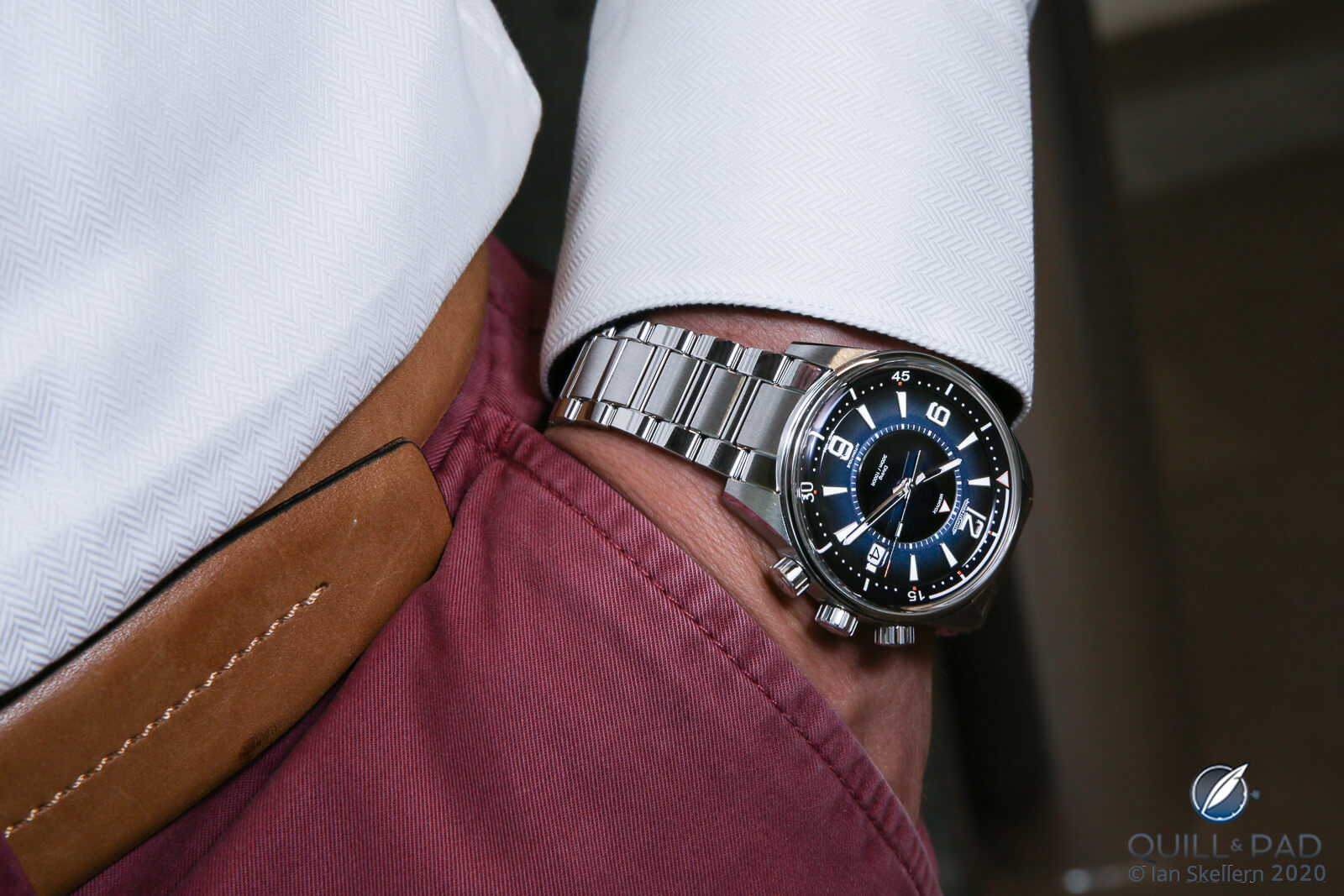
Jaeger-LeCoultre Polaris Marina Memovox
The Polaris is known to be their sports model, embodying the elegance of JLC with a spirit of adventure – their words, not mine. Yet, where is the imagery showing the Polaris in an adventurous scenario?
Why is it not more widely pushed that this is based on the 1968 Memovox Polaris? Without this angle, JLC remains a brand for enthusiasts which, as mentioned at the start, is not a problem, but it does help explain why in the broader context they have not seen a rise in demand.
It might be obvious, but a strong marketing campaign can bring in new customers at all price brackets. JLC is a brand that stays out of pop culture and by doing so, it does not gain that recognition with a younger audience.
Regardless of whether you or I think it is a good idea to attract younger consumers, bringing in those people can create long-term brand loyalty. Currently, JLC is not providing many options for this client base, and even if they are, they are not making it known.
————————————————————————————
————————————————————————————
How could they change this?
Reading the above, it should be quite obvious as to what I believe the fixes are to bring more demand for JLC. Whether they would want to is a different question as they have remained loyal to what they stand for even through the ups and downs of the industry.
However, in my opinion, it comes down to two things: a new compelling entry-level watch and marketing.
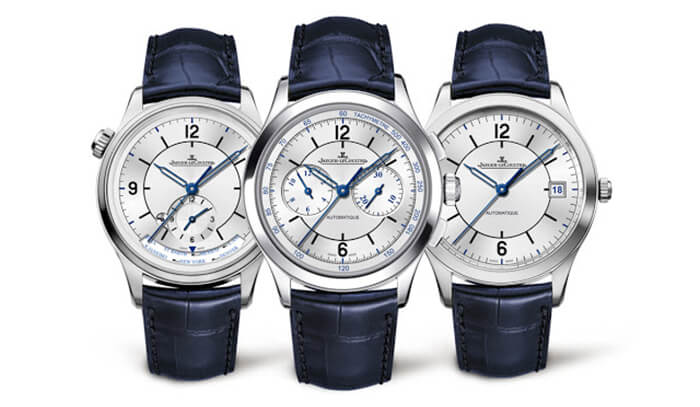
Jaeger-LeCoultre Master Control sector dials collection 2017: Geographic, Chronograph and Date
Producing an attractive and affordable entry-level watch is a challenging task. It’s not easy to achieve and some brands are more successful than others.
While it does feel as though there is a formula in how to achieve this – a versatile size, distinct design, a not-too-thick case, a strong bracelet etc., it does not need to always follow this pattern. I believe JLC already had this model in their collection.
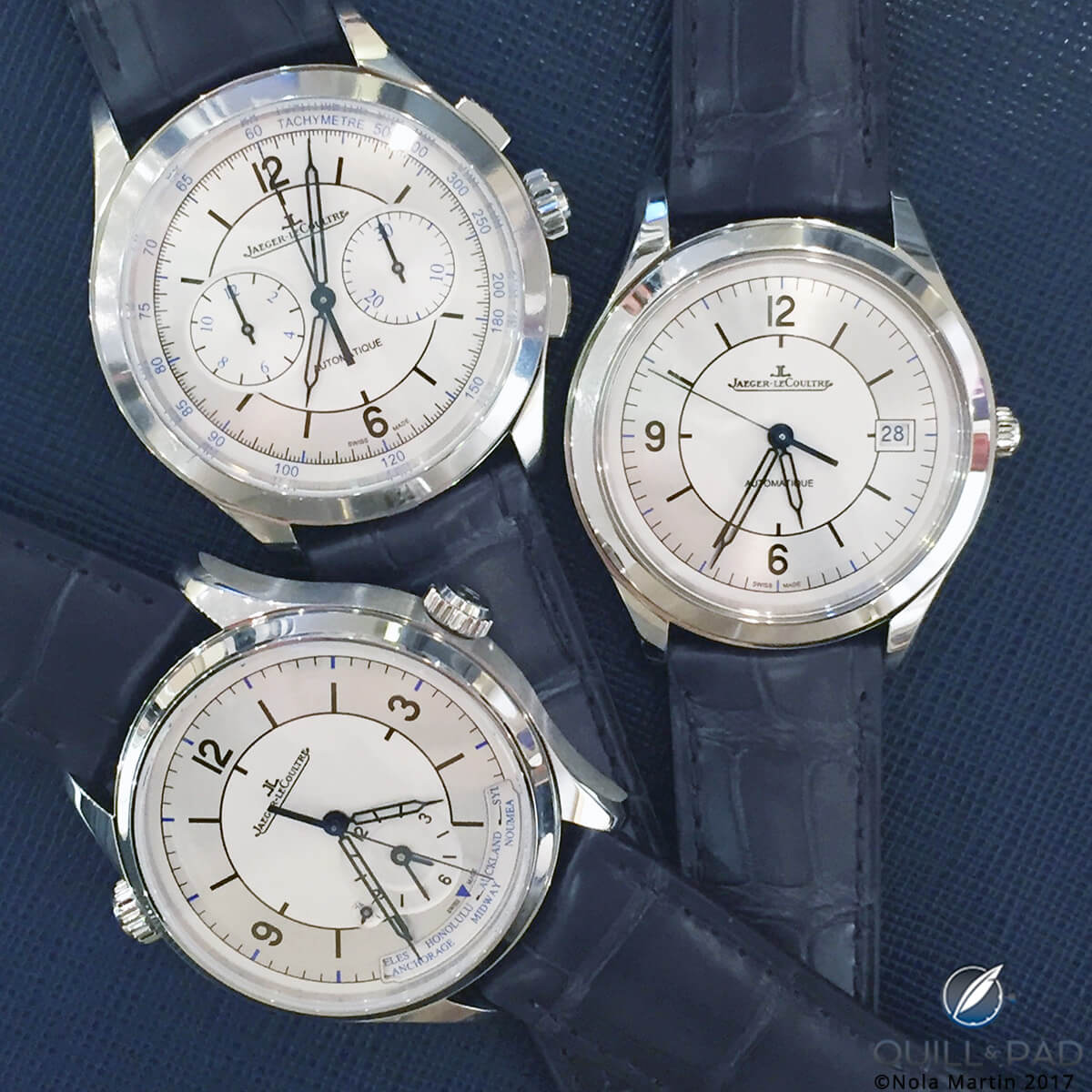
Jaeger-LeCoultre Master Control sector dials collection 2017: Master Control Chronograph, Master Control Date and Master Control Geographic
It was the 2017 Master Control Sector Dial. It had a unique aesthetic that could span age groups. It became the instance where there was not a better sector dial for the price available. JLC had the “it” watch if you wanted that style. Even if you weren’t out to buy a sector dial, the look was distinct but not enough to make it divisive.
Furthermore, there were different complications added, yet the design remained consistent across the range and became recognizable. The best part, it was affordable for the brand at €5,900. It was an instant hit and they managed this without a strong marketing angle, so just imagine what it could have led to with that push as well.
It could have evolved to different dial colors, steady updates and even a watch that, dare I say, could resemble a field watch if the color palette was right (don’t judge me, as I know this does not traditionally fit the brand). It truly confuses me that it was discontinued after only 2 years!
The more efficient angle to tackle is marketing. I want JLC to be loud about how good they are. I want everyone to know that they are the brand that is so strong at watchmaking the likes of Patek Philippe and Audemars Piguet have turned to JLC for movements in the past.
I want to see a campaign that shows us what they mean by the Polaris being adventurous.
————————————————————————————
————————————————————————————
Why should you go and spend nearly five figures on the Polaris when you can look at several other watches in that same price bracket? It does not need to be complicated, just something that brings out the emotion beyond marketing shots on a black background or model.
Storytelling is such a big part of these purchases and apart from the Reverso, it is not easy to know what you are buying into. You need to know the story so that even before you decide to make a luxury watch purchase, you have JLC at the back of your mind.
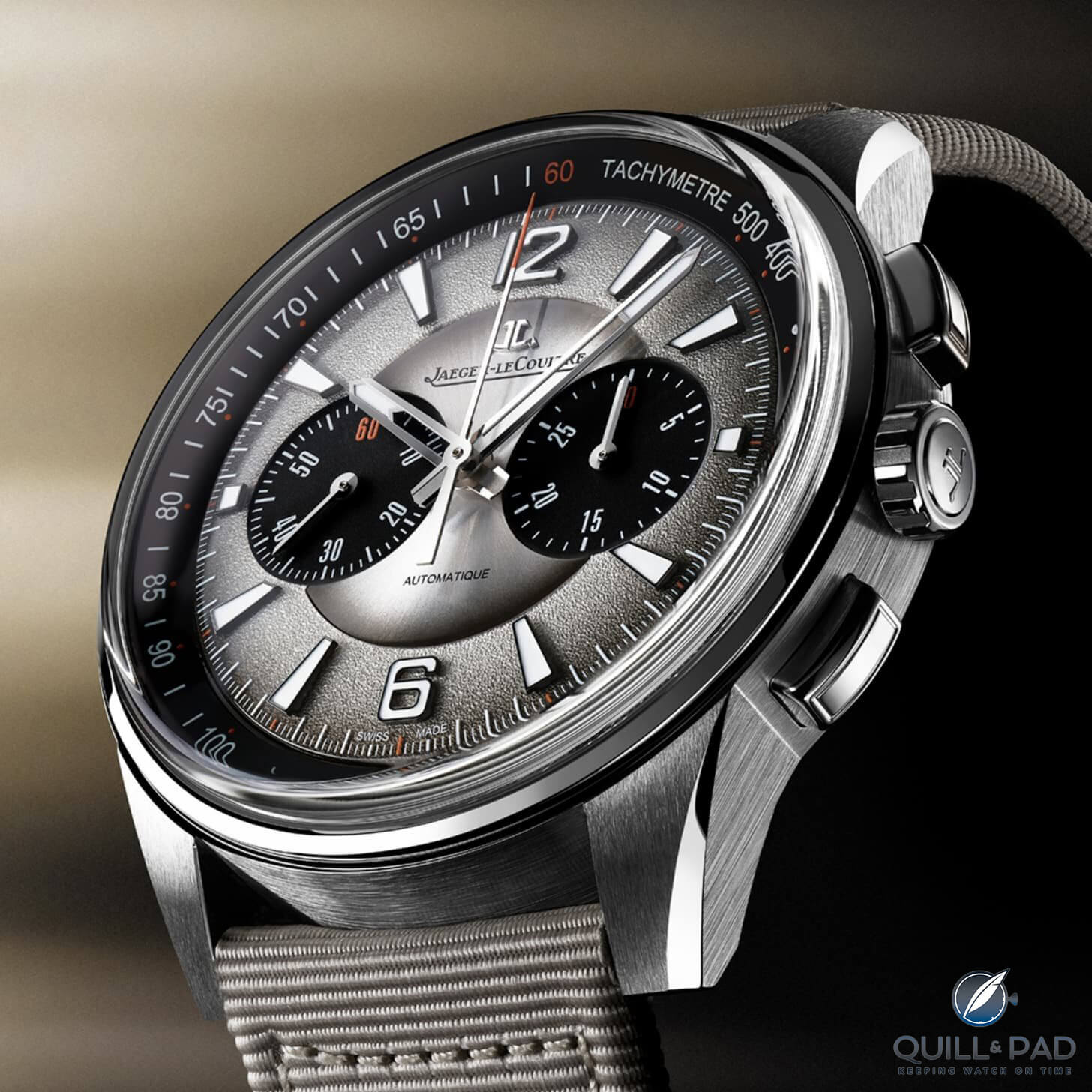
Jaeger-LeCoultre Polaris Chronograph
I am not currently looking for a new watch, but I know what Omega, Rolex, Cartier, Blancpain, Audemars Piguet, Zenith, Patek Philippe, and many more stand for, and what models I would look at.
Conclusion
JLC is one of the prominent watchmakers in the industry and has had a long history focused on innovation and engineering. Without question, they produce some of the most interesting watches when it comes to movement complications.
JLC also produces some fantastic watches at the other end of the scale that are relatively more affordable and should be competing with the most popular names available.
However, despite the surge in interest and demand in recent years, JLC has not experienced that same upswing, even if they have increased prices at an extremely fast rate.
There are several reasons why this could be, and while there is no firm answer, it can be a combination of their focus on more formal watches, stiff competition at their entry price range and marketing.
Is there a need for JLC to change in any way? No. However, given the respect they have within the watch community, it feels as though they deserve more attention.
For me, the starting points seem clear – a versatile, compelling entry-level watch bringing in new customers and marketing that focuses more on the storytelling of why your next watch should be a JLC.
As I mentioned at the beginning, I am a great fan of the brand and I have an enormous amount of respect for them. You may not agree with the points made, but I would love to hear your opinions on why is in this position and what could be done going forward.
For more information, please visit www.jaeger-lecoultre.com
You can read more articles by Raman Kalra at www.thewatchmuse.com.
You might also enjoy:
Why I Love the Jaeger-LeCoultre Reverso – and You Should Too
Jaeger-LeCoultre: A Collector’s ‘Gateway Drug’ And Ongoing Pleasure
Jaeger-LeCoultre Master Ultra Thin Moon Enamel: Once In A Blue Moon
Leave a Reply
Want to join the discussion?Feel free to contribute!



There are other aspects that influence JLC’s today situation:
1-Rolex, Patek Philippe, AP are standalone businesses in control of their own corporate strategies. That’s not the case for JLC which is part of Richemont Group that also owns Vacheron, Cartier, Piaget and A Lange & Sohne. It’s up to Richemont to prioritise brands’ strategies otherwise inner competitiveness erodes Richemont’s sales. It seems Vacheron owns the prime status while Piaget & Cartier push the timepiece as jewellery approaches. If brands would be let alone to compete I’m pretty sure Vacheron would have a hard time keeping up with the know-how of JLC and Piaget.
2-Innovating complex mechanical calibres takes time. Mass-producing them is a conundrum: market demand is low while operating expenditures are high. Focusing on an entry-level line will cannibalise internal resources to keep up with much higher market demand (once they take off). Hence strategy prioritisation kicks in: mass-production based on low number of simpler calibres, but multiple models (using same calibres), to reach higher revenue, but no time for pushing complications forward (more than 50% of Rolex’s sales come from 6 models that use only 2 different calibres) or the reverse strategy which is JLC’s positioning today. In a way this leads to the conclusion that there are grounds for two different business models under the same roof if a reputable watch name wants to do both. Most likely this is the reason why Seiko owns/controls Pulsar & Orient, and Rolex Tudor.
In all fairness JLC should be a standalone company and do the same. I doubt it will happen – why? Who in this crowded industry (of mechanical watches) will willingly allow the creation of a new strong competitor? (industry which – if we exclude the micro & independent brands – includes 9 conglomerates, 6 stand alone companies, and about 88 brands)
Hi Al, think you have hit another point very well. The big groups will always lead to some red tape along the way of development and strategy. There will always be the rest of the group to consider. One counter point, I find LVMH have been doing a good job recently with Zenith and TAG Heuer. They have been allowed to explore their past models as well as moving some more modern watches towards current trends. Then Bulgari has really repositioned itself in recent years. So I guess it can be done even if it will never have true freedom! Thanks, Raman
I agree with you. The master control sector dials Were beautiful and they stood out, even if not something particularly unique. I was looking at the 3 hander, but the date complication at 3 put me off and it was competing with what was very available Rolex at the time, so the choice wasn’t too hard for me. I would have also liked to of seen it with a water resistance of 100 m. Their new Master control are nice and I appreciate them but they do not stand out across the room and I can’t fathom why they would replace the sector with this, they could have had them both, and as you say added more variation to the sector dial range.
Fast forward to 2022 and I quite fancied a Polaris, I looked at them, thought the price was a bit expensive although not too bad, but didn’t pull the trigger. Then I think it was earlier this year and I was looking again and suddenly the price of the Polaris had increased by about 2000! Well that was rather insulting and to be honest put me right off the brand as a whole, well put me off buying them, I still love them.
Hi Stu, I will never understand the Sector dial decision. Even if you did decide on a Rolex, the main point is you knew of that particular JLC and it offered “value” considering the price point and brand name. Their current price increases are definitely aggressive. I have written about this exact point before as I wonder if increasing them too fast is not the best idea. Clearly the Polaris is a push but that big a difference within a short period of time will just put people off I worry. Thanks, Raman
I always found the design of the Master dials pretty boring – the sans serif Arabic numbers etc. never did much for me.
The Reverso always intrigued me, and I thought about buying a Reverso Tribute Duoface. But almost all Reverso’s are manually wound, and I wanted an automatic to wear daily.
The recent large price hike has pretty much convinced me that I won’t buy a new JLC in the future. JLC is no longer the value proposition that it once was.
Excellent read with some thoughtful assessments. I quite like the Reverso but not enough to purchase or in any compelling way that suits my style. I see it it as a very handsome, albeit small, heritage timepiece with an interesting story. What grabbed my attention was the Sector line and as noted, poof, it disappeared and went up in secondary-portal value. I did purchase the limited edition Master Control Calendar in the two-tone blue as the aesthetics was too delightful to ignore. I think I liked the limited series as well. It was expensive and quite a jump for me. The watch is beautiful and the jumping date between the 15th and 16th and moon dial were delightful. Alas, I realized the complications were so small that only very bright light or reading glasses allowed me to fully enjoy the dial’s exquisite finishing. It became a frustrating watch to wear as odd as this may sound. I sold it and moved forward doubtful to re-purchase anything from their current catalogue as much as I appreciate the high horology, history and my experience and initial excitement of strapping on such a luxurious timepiece.
Hi Gerard, I’m happy you enjoyed the article! Interesting to hear about your experience. Some really are too beautiful to ignore, especially when they start adding complications. It’s a shame that it didn’t work for you! Maybe one day I’ll try JLC for myself but at the moment, I just appreciate them from afar as you can tell. Thanks, Raman
Selfishly, I like it that JLC stays for connoisseurs only, for that matter the same goes for Breguet. I couldn’t get rid of my Rolex GMT Lunette Noir fast enough for less than $7000 in 2019…
I owned several Géographiques, Geographics and Reversos in the past twenty some odd years, and now a Q3022420 and Q9088180.
Great article.
JLC needs a New and Fresh Lease of Life.
Their prices are high now (but so are most other brands). BUT what they really need is to make watches with more Emotion. Other than the Reverso series, I have always felt that their other Families lack emotion. Take the new Master Calendar Chronograph and Master Calendar – its like it is 98% of the way there, but that 2% is missing. And often I have walked into JLC Boutiques and gotten bored. Even with the Reverso they can do so much more. Even their grand complications – though technically awesome, often look bland.
And maybe they also need to move away from the ‘Watchmakers Watchmaker’ tag. Today many brands are quite Vertically Integrated and maybe their reliance on JLC is quite less or lesser (I am not 100% sure of this.) And also the Millennials, Gen X,Y, and Z might not be really interested in the fact that JLC made a legendary movement for AP,PP, VC in the past (still used today.) I have come across a few who have bought a modern AP RO with that movement, and none of them even knew this bit. For them, being allocated the AP RO was the ‘bigger thing.’
JLC needs watches with Emotion. Maybe a new watch family for men is not a bad idea. Something that looks to the future, and stands on its own.
Hi Kunal, happy you enjoyed the post!
I very much agree with you and that is where my point to marketing stemmed from. There is not much of a story as to why you buy a JLC. Even if they are finished and made well, they don’t have that emotional draw and need to work on telling people why they should go with them. I don’t mind the watchmakers watchmaker line. While not many buy an AP for the movement, it is a catchy slogan for JLC. Need to figure out how to use it a bit better maybe? Thanks!
No mention of the Futurematic? Seriously?
Hi Chambolle, I could have mentioned the Futurematic but I don’t think it fit with the article. It is a different task putting together all the movement innovations JLC has come up with over the years. It does kind of prove the point above in a way – a short run model in the 1950s, that is no longer in production, which focused on movement engineering more than anything else. Doesn’t mean it isn’t a great watch! Just for a different context…unless they give us a new one which would be interesting! Thanks!
Wouldn’t a modern revival of the Futurematic be an interesting watch, particularly given the demand for vintage/retro styled watches? The late ‘50s, 37mm iteration would be a good place to start.
Interesting is an understatement 🙂 I think it would go down so well! Usually I find brands draw too much from historical models, but JLC doesn’t do it enough. Would be easy to bring some JLC history into the spotlight!